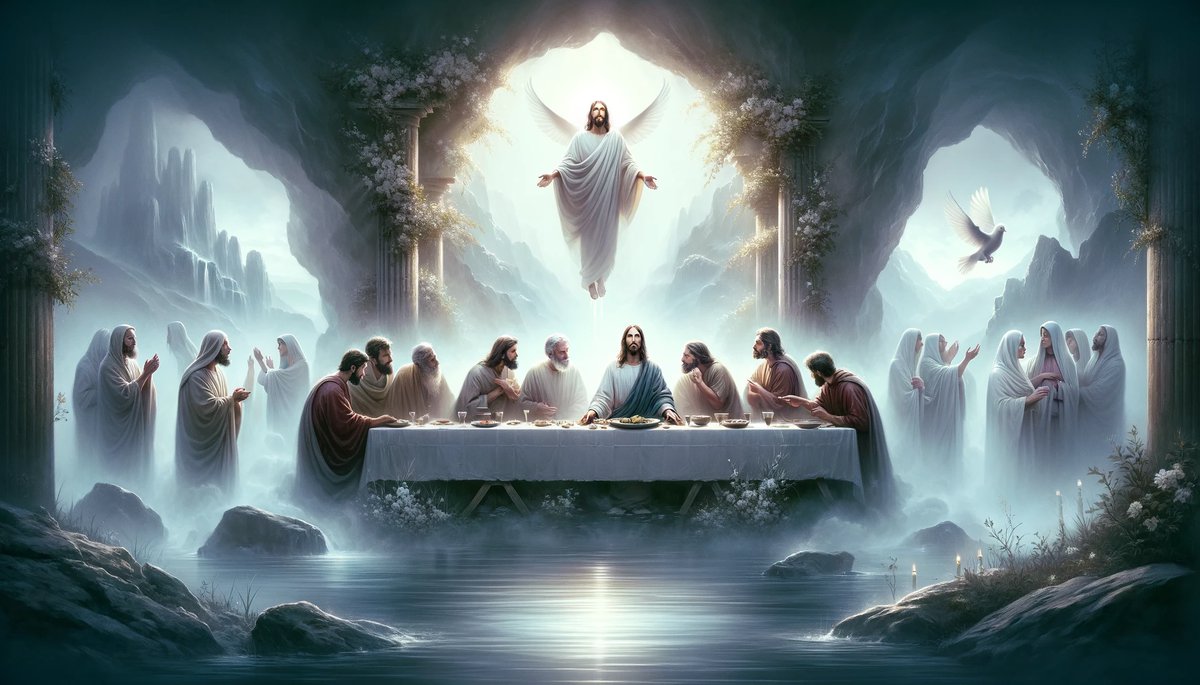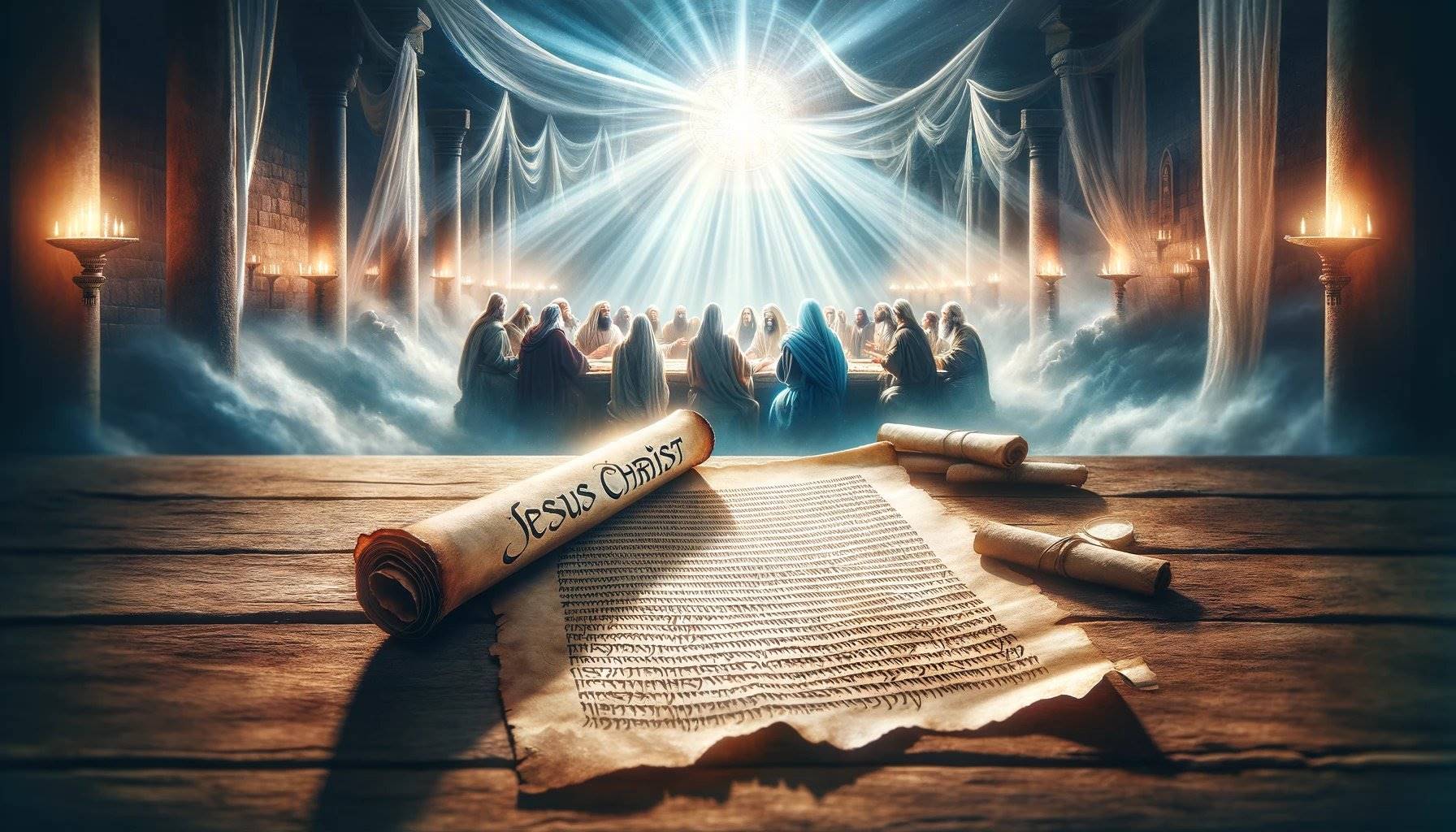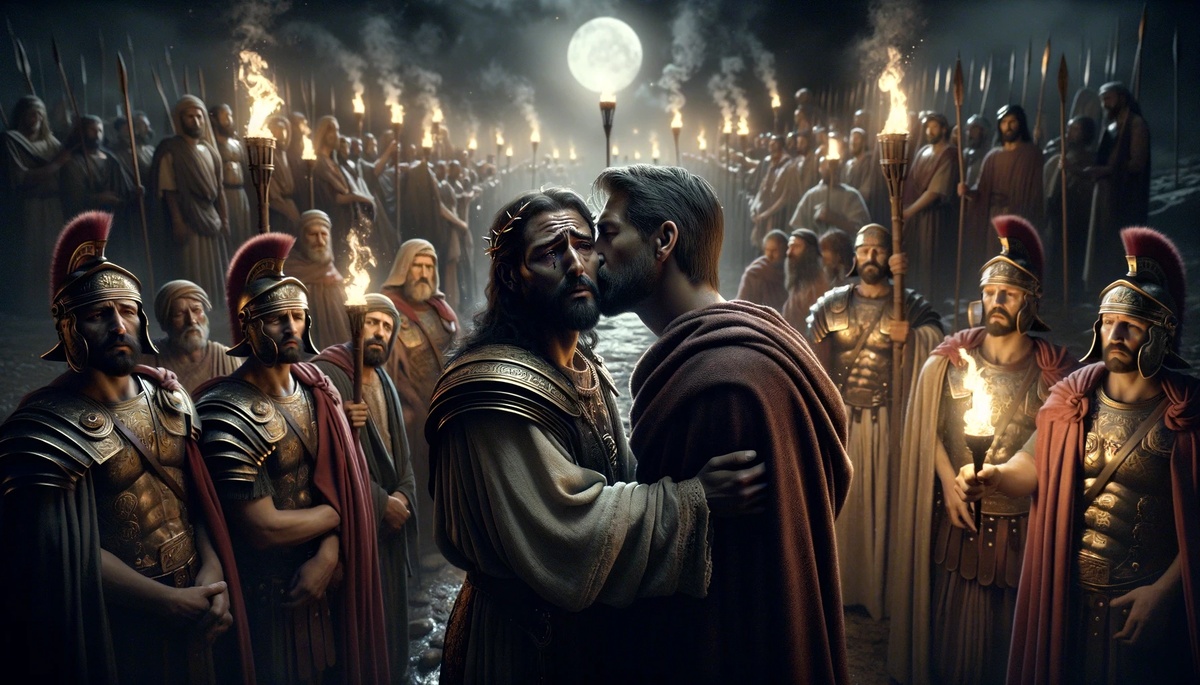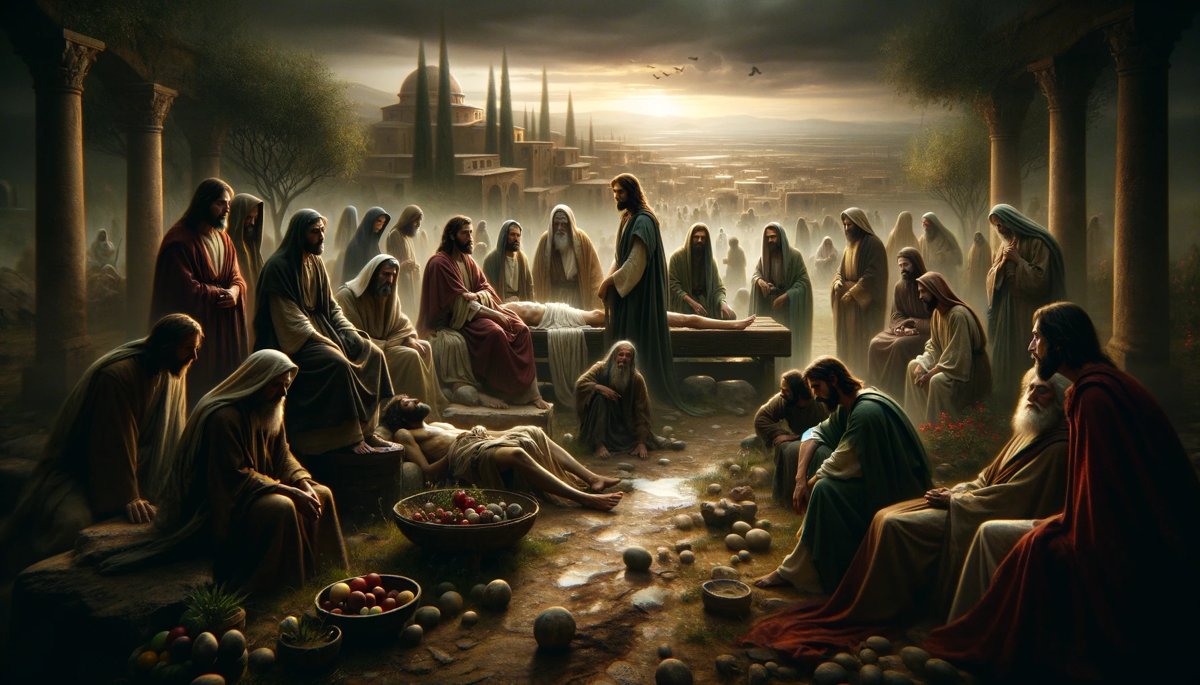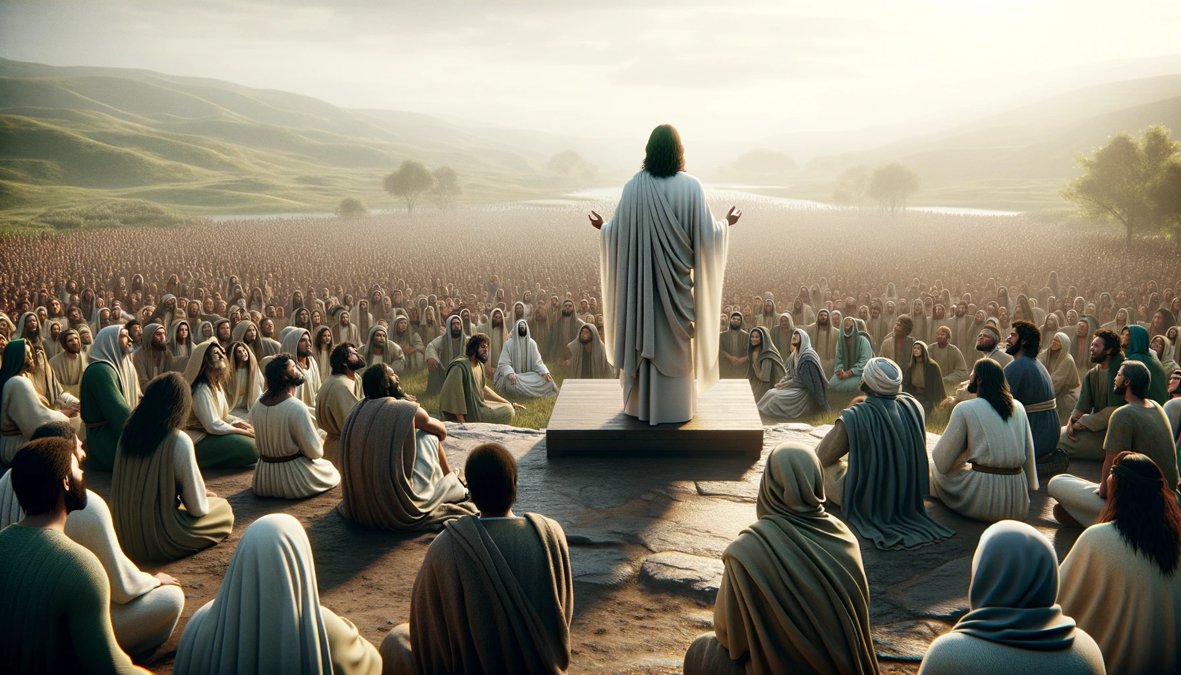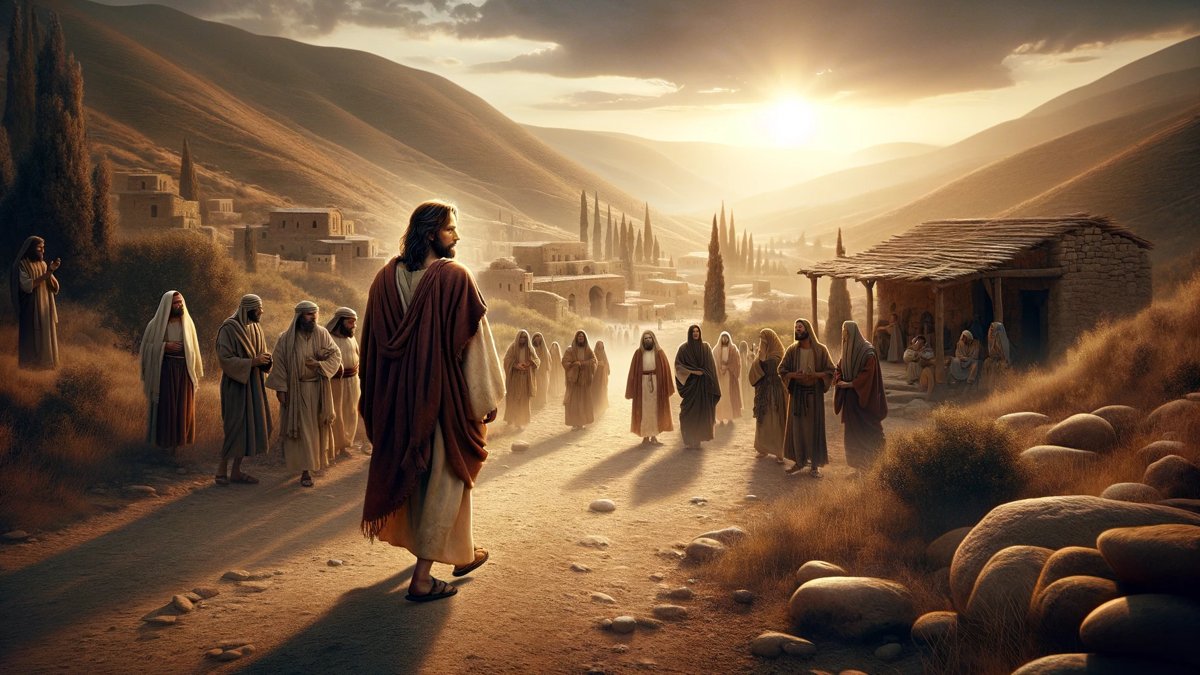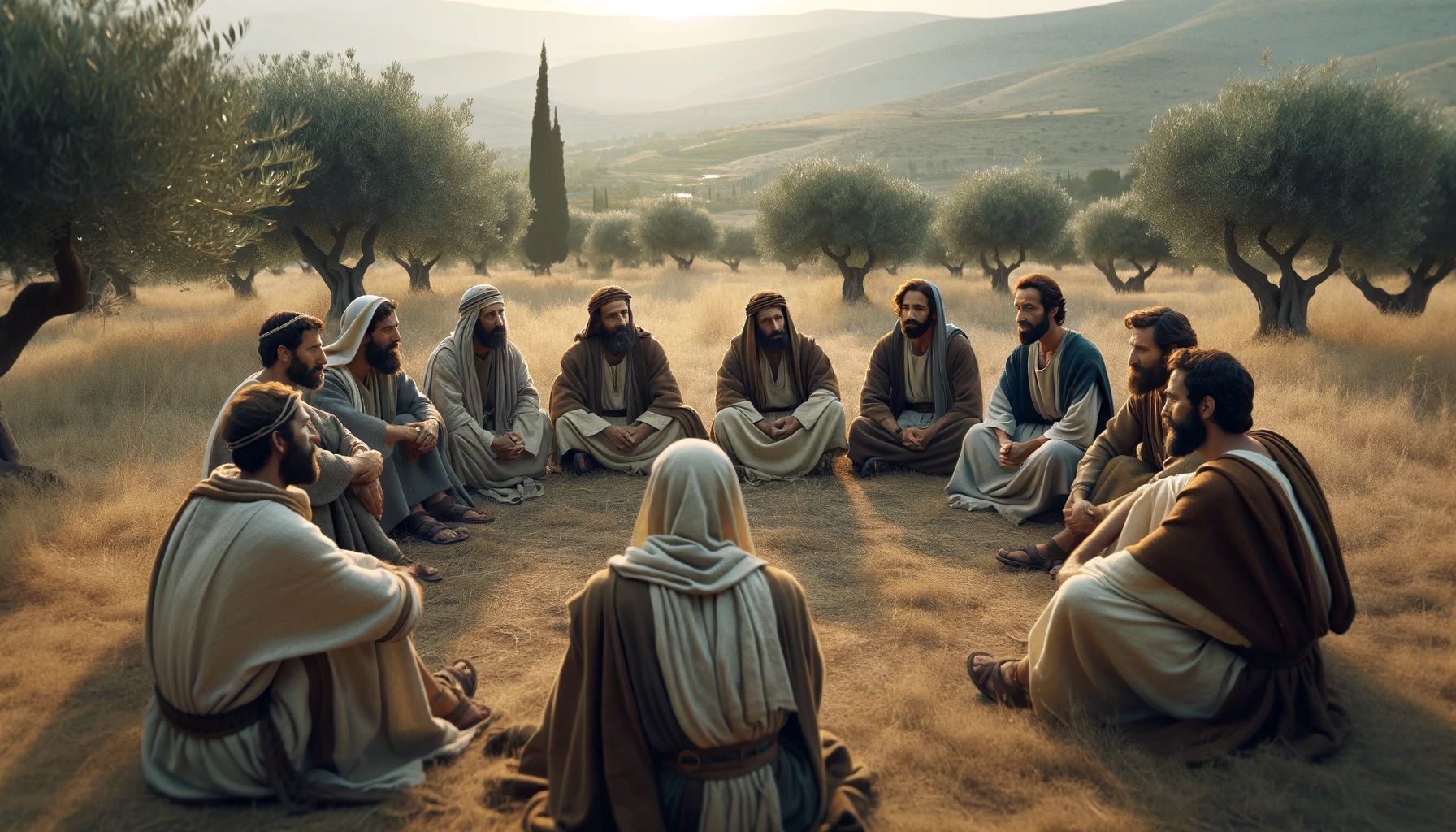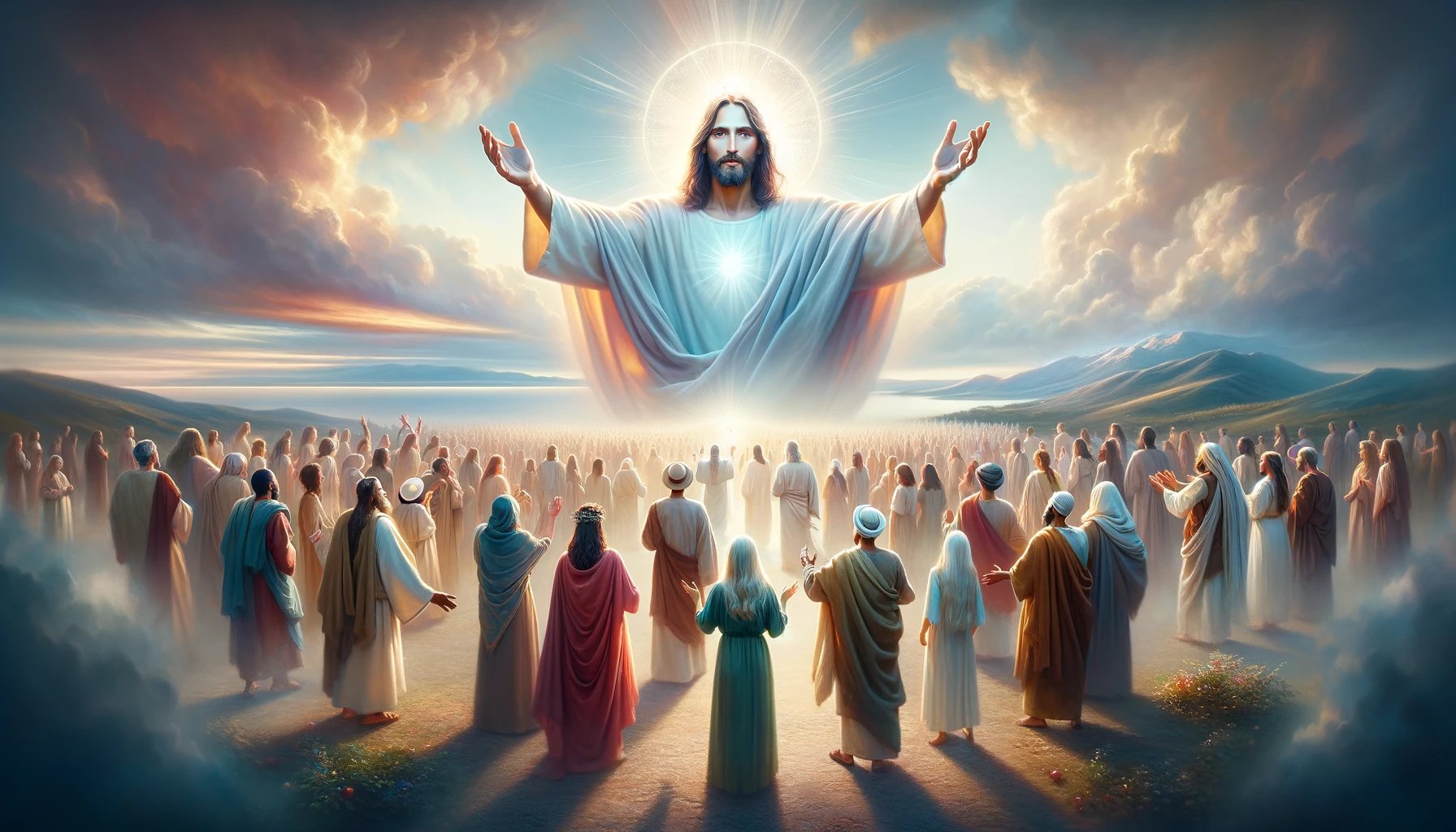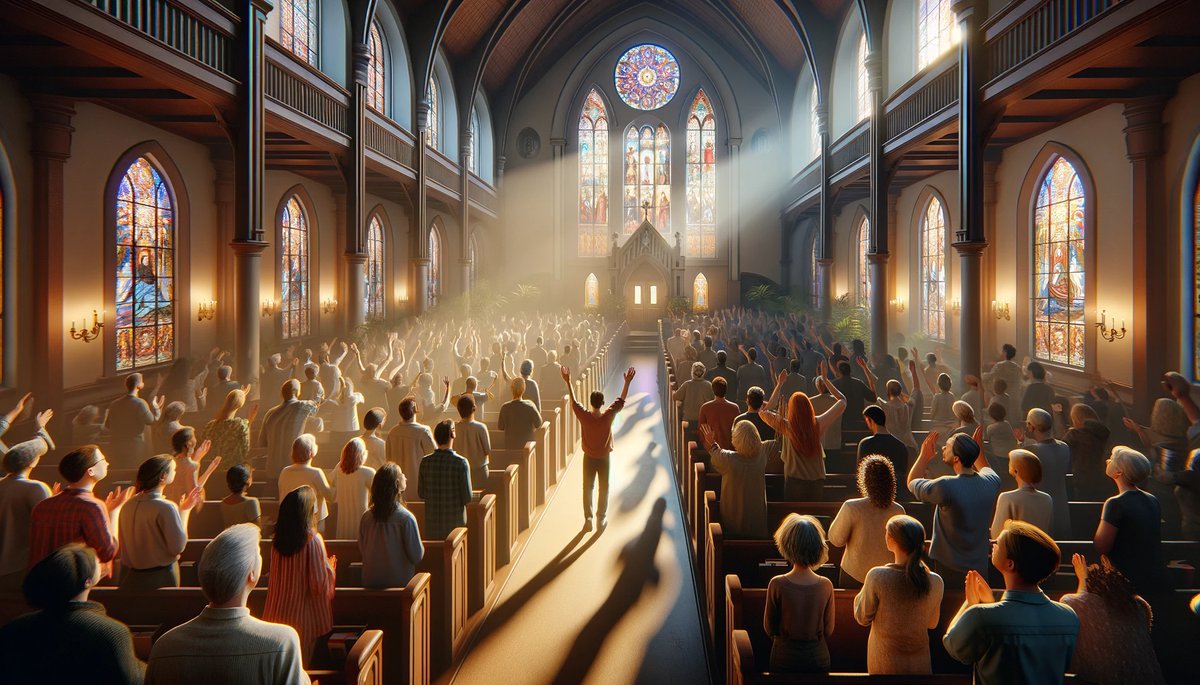Home>Christian Videos>Bible Stories>How Did Jesus Christ Actually Look Like
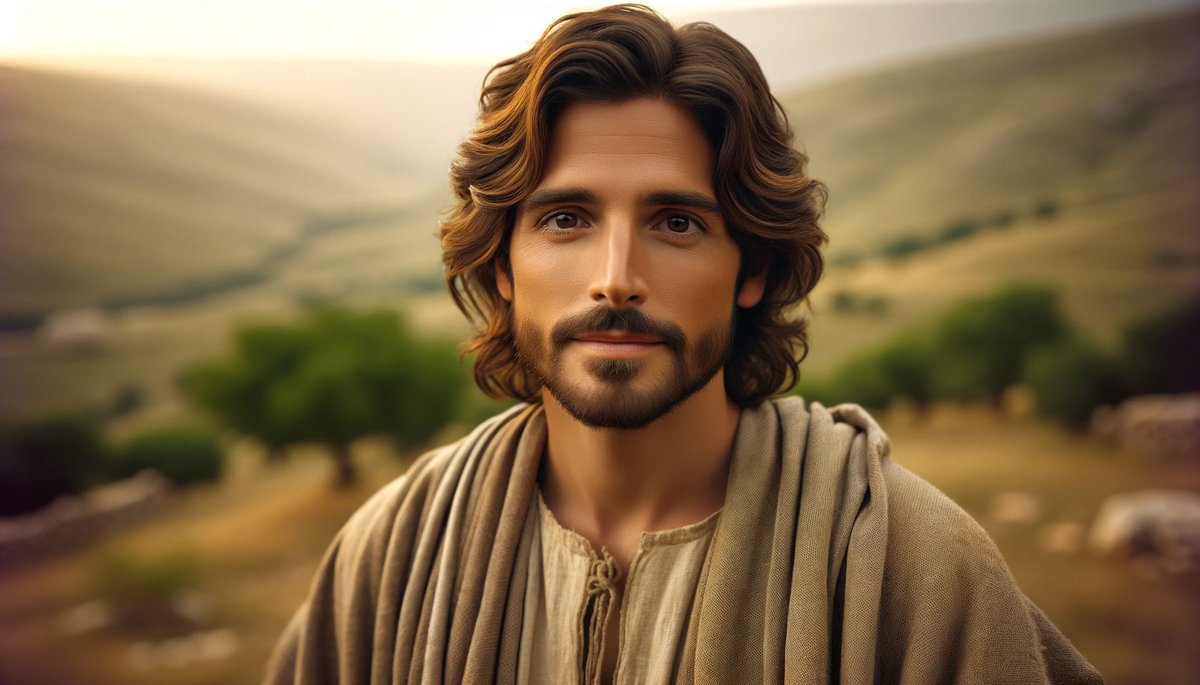

Bible Stories
How Did Jesus Christ Actually Look Like
Published: March 2, 2024
Jason DeRose, Managing Editor at Christian.net, uses his expertise in religion and journalism to deepen understanding of faith's societal impacts. His editorial leadership, coupled with a strong academic background, enriches the platform’s diverse content, earning him recognition in both journalism and religious circles.
Discover the true appearance of Jesus Christ as described in the Bible stories. Uncover the historical and cultural context of his physical features.
(Many of the links in this article redirect to a specific reviewed product. Your purchase of these products through affiliate links helps to generate commission for Christian.net, at no extra cost. Learn more)
Table of Contents
The Historical Context of Jesus Christ's Appearance
The historical context of Jesus Christ's appearance is a topic that has intrigued scholars, theologians, and believers for centuries. The quest to understand what Jesus actually looked like is a complex and multifaceted endeavor that involves examining historical records, cultural practices, and artistic representations from the time period in which Jesus lived. While there is no definitive physical description of Jesus in the Bible, understanding the historical context can provide valuable insights into the potential appearance of the central figure of Christianity. Here are some key aspects to consider when exploring the historical context of Jesus Christ's appearance:
-
First-Century Judea: Jesus lived in first-century Judea, a region characterized by diverse ethnicities and cultural influences. Understanding the demographics and physical characteristics of the people living in this region during that time can offer valuable context for envisioning Jesus's appearance.
-
Jewish Cultural Practices: Jesus was a Jewish rabbi, and it is essential to consider the cultural and religious practices of the Jewish people in first-century Judea. This includes aspects such as clothing, hairstyles, and grooming customs that would have been prevalent during Jesus's lifetime.
-
Roman Occupation: During Jesus's lifetime, Judea was under Roman occupation. The influence of Roman culture and the interactions between the Jewish population and the Roman authorities can provide additional context for understanding the physical appearance of Jesus and the people of that time.
-
Historical Artifacts and Archaeological Discoveries: Examining historical artifacts, such as coins, pottery, and other archaeological findings from first-century Judea, can offer valuable clues about the physical appearance and cultural practices of the people living in that era.
-
Contemporary Historical Accounts: While there are no contemporary written descriptions of Jesus's physical appearance, studying historical accounts from the time period, including those of Jewish and Roman historians, can provide indirect insights into the appearance of individuals living in first-century Judea.
By delving into the historical context of Jesus Christ's appearance, scholars and researchers can gain a deeper understanding of the cultural, social, and historical factors that may have influenced his physical portrayal. While the quest to definitively determine Jesus's appearance remains a subject of debate and speculation, exploring the historical context can shed light on the diverse and complex tapestry of first-century Judea and the enigmatic figure at the heart of Christianity.
Read more: How Did Jesus Christ Die?
Descriptions of Jesus Christ in Ancient Texts
-
New Testament Accounts: The New Testament, particularly the four Gospels of Matthew, Mark, Luke, and John, provides the most significant textual descriptions of Jesus Christ. While these accounts primarily focus on Jesus's teachings, miracles, and crucifixion, they also offer indirect insights into his physical appearance. For instance, the Gospel of Matthew describes Jesus as a Jewish man, likely reflecting common physical characteristics of individuals from that cultural background. Additionally, the Gospel of Luke mentions Jesus's circumcision, indicating his adherence to Jewish customs and traditions, which can provide context for his appearance.
-
Non-Biblical References: Outside of the New Testament, there are limited non-biblical references to Jesus's physical appearance in ancient texts. However, some early Christian writings and apocryphal texts contain symbolic or metaphorical descriptions of Jesus, often emphasizing his divine nature rather than his earthly appearance. For example, the Acts of John, an apocryphal text, portrays Jesus as a figure of radiant light, emphasizing his spiritual significance rather than his physical features.
-
Historical Context and Cultural Influences: When examining descriptions of Jesus in ancient texts, it is essential to consider the historical context and cultural influences of the authors. The Gospels were written within specific cultural and religious frameworks, and the descriptions of Jesus's appearance may have been influenced by the authors' perspectives and the expectations of their intended audiences. Additionally, the use of symbolic language and metaphorical imagery in ancient texts can make it challenging to extract literal physical descriptions of Jesus.
-
Symbolism and Theological Significance: Many descriptions of Jesus's appearance in ancient texts are laden with symbolism and theological significance. The emphasis on Jesus's divinity and spiritual role often takes precedence over detailed physical attributes. This symbolic portrayal reflects the theological aims of the authors and the broader theological interpretations of Jesus's identity within early Christian communities.
-
Interpretive Challenges: Interpreting descriptions of Jesus's appearance in ancient texts requires careful consideration of the literary, cultural, and theological contexts in which these texts were composed. While these texts offer valuable insights into the early Christian understanding of Jesus, they also present interpretive challenges due to their symbolic and theological nature.
By examining the descriptions of Jesus Christ in ancient texts, scholars and theologians can gain a deeper understanding of the ways in which early Christian communities conceptualized and portrayed the central figure of their faith. While these descriptions may not provide precise physical details, they offer valuable glimpses into the cultural, religious, and theological landscape of the ancient world and the enduring significance of Jesus Christ in Christian tradition.
The Shroud of Turin and Other Relics
-
The Shroud of Turin: The Shroud of Turin is one of the most famous relics associated with the physical appearance of Jesus Christ. This linen cloth bears the faint, sepia-toned image of a man with wounds consistent with crucifixion, sparking centuries of debate and speculation about its authenticity. Believers assert that the image on the shroud is the actual imprint of Jesus's body after the crucifixion, while skeptics question its origins and scientific validity.
-
Scientific Studies: The Shroud of Turin has been the subject of extensive scientific analysis, including radiocarbon dating, pollen and fiber studies, and forensic examinations. While radiocarbon dating initially suggested a medieval origin for the shroud, subsequent research has raised questions about the reliability of the samples used for dating, leading to ongoing scientific and scholarly discussions about its age and authenticity.
-
Controversy and Debate: The Shroud of Turin continues to be a source of controversy and debate within the scientific and religious communities. Proponents of its authenticity point to the unique properties of the image, including the presence of 3D information, as evidence of its supernatural origin. Critics, on the other hand, highlight inconsistencies in its historical provenance and the lack of definitive scientific consensus regarding its age and the nature of the image.
-
Other Relics: In addition to the Shroud of Turin, various other relics and artifacts have been associated with Jesus Christ's physical appearance, including fragments of the True Cross, purported burial shrouds, and relics of the Crown of Thorns. These relics hold significant cultural and religious value for many believers, serving as tangible connections to the life and crucifixion of Jesus Christ.
-
Devotional and Spiritual Significance: For devout Christians, relics such as the Shroud of Turin and other artifacts associated with Jesus Christ's physical presence hold profound devotional and spiritual significance. These relics are venerated as tangible links to the central events of Christian salvation history, fostering a sense of connection to the life, death, and resurrection of Jesus Christ.
-
Interdisciplinary Inquiries: The study of relics associated with Jesus Christ's physical appearance encompasses interdisciplinary inquiries, involving fields such as archaeology, history, theology, and forensic science. Scholars and researchers continue to explore the historical, cultural, and religious contexts of these relics, seeking to unravel their enigmatic origins and significance within the broader tapestry of Christian faith and tradition.
-
Ongoing Mysteries: The Shroud of Turin and other relics linked to Jesus Christ's physical appearance remain shrouded in mystery, captivating the imagination and curiosity of believers and non-believers alike. The enduring allure of these relics reflects the enduring fascination with the historical and physical dimensions of Jesus Christ's life and legacy, transcending the boundaries of time and belief.
In summary, the Shroud of Turin and other relics associated with Jesus Christ's physical appearance continue to inspire profound contemplation, scholarly inquiry, and spiritual devotion, embodying the enduring enigma and significance of the historical Jesus within the rich tapestry of Christian tradition and belief.
Modern Forensic Reconstructions of Jesus Christ's Face
-
Advancements in Forensic Science: In recent years, advancements in forensic science and facial reconstruction techniques have sparked renewed interest in creating depictions of Jesus Christ's face based on historical and anatomical data. Forensic reconstructions aim to utilize scientific methods to approximate the facial features of individuals from the past, drawing on skeletal remains, historical context, and anthropological knowledge to create lifelike representations.
-
Anthropological Insights: Forensic anthropologists and researchers have leveraged their expertise in studying human skeletal remains to gain insights into the potential physical characteristics of individuals from specific historical periods and geographic regions. By analyzing skeletal remains from ancient populations, anthropologists can discern patterns of facial morphology, cranial features, and other anatomical traits that inform the process of facial reconstruction.
-
Facial Reconstruction Techniques: Modern facial reconstruction techniques involve a multidisciplinary approach, combining data from skeletal remains, historical records, and population-specific anatomical knowledge. Using 3D imaging technology, forensic artists and anthropologists can digitally reconstruct the soft tissue features of a skull, incorporating details such as muscle structure, skin thickness, and facial proportions to create a facial approximation.
-
Historical and Cultural Context: When reconstructing the face of Jesus Christ, forensic artists and researchers consider the historical and cultural context of first-century Judea, taking into account the ethnic diversity and prevailing physical characteristics of the region's inhabitants. By drawing on anthropological data and historical insights, forensic reconstructions strive to create culturally and historically informed depictions of Jesus's face.
-
Limitations and Interpretive Challenges: It is important to acknowledge the limitations and interpretive challenges inherent in forensic reconstructions of historical figures. While these reconstructions offer valuable insights, they are inherently speculative and subject to interpretation. The facial features of individuals, including Jesus Christ, cannot be definitively determined solely through forensic reconstructions, and these depictions should be approached with a degree of caution and scholarly scrutiny.
-
Public Reception and Controversy: Forensic reconstructions of Jesus Christ's face have garnered significant public attention and sparked debates within both religious and scientific communities. While some individuals view these reconstructions as valuable attempts to humanize and contextualize the historical Jesus, others express concerns about the speculative nature of such depictions and their potential impact on religious beliefs and traditions.
-
Cultural and Artistic Representations: Forensic reconstructions of Jesus's face intersect with cultural and artistic representations of the iconic figure. These reconstructions can influence the visual imagery of Jesus in popular culture, shaping artistic portrayals and public perceptions of his physical appearance. As such, the intersection of forensic reconstructions and cultural depictions contributes to ongoing dialogues about the historical and visual dimensions of Jesus Christ's legacy.
In summary, modern forensic reconstructions of Jesus Christ's face represent a convergence of scientific inquiry, historical context, and cultural significance, offering intriguing insights into the potential physical appearance of the historical Jesus while prompting contemplation and discussion within diverse spheres of inquiry and belief.
Cultural Depictions of Jesus Christ's Appearance
Cultural depictions of Jesus Christ's appearance have played a significant role in shaping the visual imagery and iconography associated with the central figure of Christianity. Across diverse artistic traditions, Jesus has been portrayed in a multitude of ways, reflecting the cultural, aesthetic, and theological perspectives of different time periods and geographic regions. These depictions encompass a wide range of artistic mediums, including paintings, sculptures, mosaics, and illuminated manuscripts, each contributing to the rich tapestry of visual representations of Jesus Christ.
-
Iconography and Symbolism: Cultural depictions of Jesus Christ often incorporate symbolic elements and iconographic motifs that convey theological and spiritual meanings. For example, the use of halos, specific hand gestures, and accompanying symbols in artistic representations serves to communicate aspects of Jesus's divine nature, salvific role, and teachings. These visual symbols are deeply rooted in Christian iconography and contribute to the enduring symbolism associated with Jesus's appearance.
-
Regional and Ethnic Variations: Throughout history, cultural depictions of Jesus Christ have exhibited regional and ethnic variations, reflecting the diverse artistic traditions and visual languages of different cultures. From the Byzantine icons of Eastern Christianity to the Renaissance masterpieces of Western Europe, each cultural milieu has imbued its representations of Jesus with distinct stylistic elements and interpretive nuances, enriching the global tapestry of visual portrayals.
-
Evolution of Visual Imagery: The visual imagery of Jesus Christ has evolved over time, influenced by artistic movements, theological developments, and societal changes. For instance, the portrayal of Jesus in medieval art often emphasized his role as a judge and ruler, while Renaissance depictions sought to humanize and imbue him with emotional depth. These shifts in visual imagery reflect broader shifts in religious and artistic sensibilities across different historical periods.
-
Cultural Adaptations and Syncretism: In regions where Christianity intersected with indigenous belief systems and artistic traditions, cultural adaptations and syncretism have influenced the depictions of Jesus Christ. This is evident in the visual representations of Jesus in Latin American, African, and Asian art, where local artistic styles and cultural symbols have been integrated into the portrayal of the central Christian figure, reflecting the dynamic interplay between faith and culture.
-
Contemporary Visual Interpretations: In the modern era, cultural depictions of Jesus Christ continue to evolve, encompassing a diverse array of artistic expressions, including contemporary paintings, sculptures, digital art, and multimedia installations. These contemporary interpretations often engage with issues of identity, diversity, and social justice, reimagining Jesus's appearance in ways that resonate with contemporary audiences and address pressing societal concerns.
-
Impact on Popular Devotion and Identity: Cultural depictions of Jesus Christ's appearance have a profound impact on popular devotion and the construction of religious and cultural identities. Visual representations of Jesus serve as focal points for personal and communal worship, shaping the religious imagination and fostering a sense of connection to the divine. Moreover, these depictions contribute to the visual construction of Christian identity, influencing how individuals perceive and relate to their faith tradition.
In essence, cultural depictions of Jesus Christ's appearance encompass a rich and diverse visual heritage that reflects the multifaceted nature of Christian belief, artistic expression, and cultural adaptation. These depictions not only convey the enduring significance of Jesus Christ within the Christian tradition but also serve as testaments to the dynamic interplay between faith, art, and cultural diversity across the centuries.
